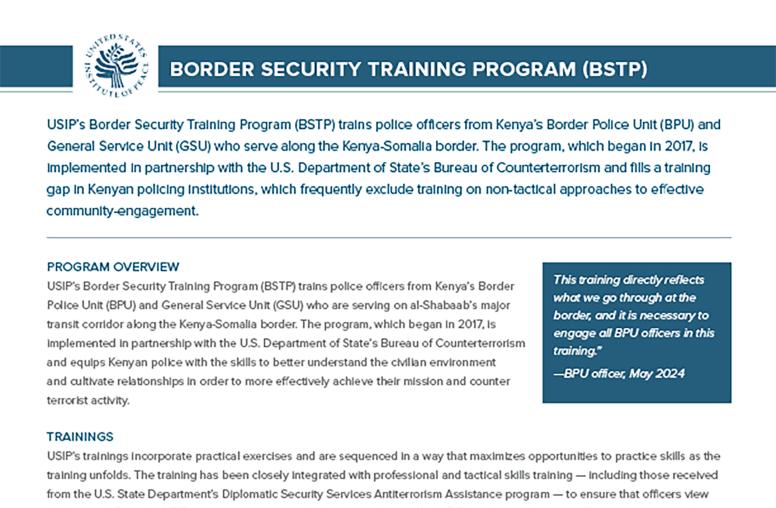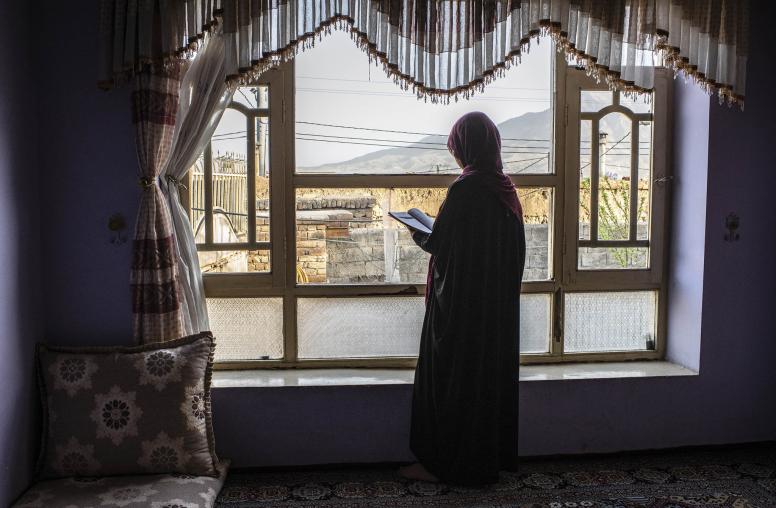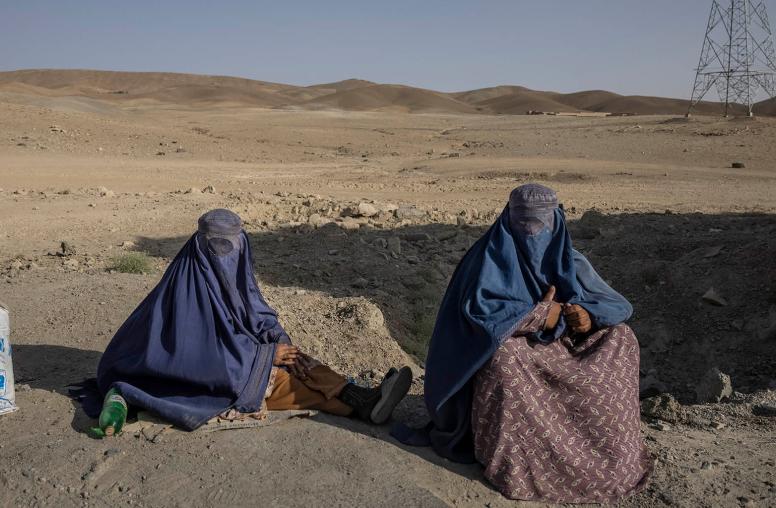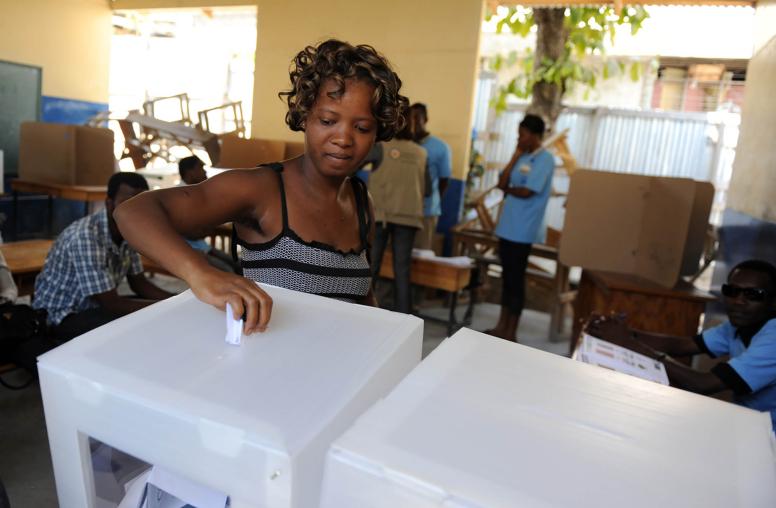Going Beyond Accountability to Deter Conflict-Related Sexual Violence
Prosecutions are important, but not as the main policy lever for deterrence.
In a historic move, President Biden signed a memorandum last November that bolstered the U.S. response to conflict-related sexual violence, including rape, sexual slavery, forced pregnancy, forced sterilization and other forms of wartime sexual harm. The new directive was timed to coincide with an international conference in London that marked the 10-year anniversary of the U.K.’s Preventing Sexual Violence in Conflict Initiative and sought to build on the initiative’s 2014 global summit as well as the “declaration of commitment” to end sexual violence in conflict that was signed by more than 150 countries in 2013.

The twin measures of the presidential memorandum and the conference are notable because they move beyond merely drawing more attention to the problem. Although wartime rape has been described in the past as the “greatest silence,” and more recently as a “hidden crime,” conflict-related sexual violence is now understood as a persistent and ongoing global problem due to the extraordinary efforts of advocates and activists. Prominent reports of sexual violence in Ukraine and Ethiopia are only the most recent examples — sexual violence has been reported in numerous other on-going conflicts, such as Myanmar, as well.
While political will has waxed and waned since the first global summit in 2014, what to do about conflict-related sexual violence remains a vexing challenge. The effectiveness of the response partly lies in how conflict-related sexual violence is defined as a policy problem. For the most part, conflict-related sexual violence has been viewed by governments and practitioners as a crime requiring legal accountability. However, a growing body of evidence suggests that accountability alone has serious limitations as a tool for deterrence of conflict-related sexual violence and may do little to address the root causes.
An Evolution in Understanding and Programming
In recent years, policy responses to conflict-related sexual violence have developed to better reflect the current state of knowledge about the issue.
For example, the White House memorandum states, “The United States does not accept conflict-related sexual violence as an inevitable cost of armed conflict.” Scholars have long noted that conflict-related sexual violence is not unavoidable and is not ubiquitous, and this statement from the White House powerfully rejects the outdated view that war and rape are inextricably linked.
In fact, there is widespread variation in conflict-related sexual violence — some armed groups never perpetrate sexual violence and others commit it on a massive scale, even within the same war. The documentation and analysis of this variation has been critical for developing a collective understanding of the conditions under which conflict-related sexual violence occurs, and has illuminated how some armed groups successfully prevent sexual violations by their members.
Notably, governments and other international actors have also come to recognize and prioritize survivor-centered programming. The turn toward survivor-centered interventions — which ask, rather than assume, what survivors need — is critical to recovery and post-conflict peace. This has been aided by a significant evolution in protocols, such as the Murad Code, that serve to safeguard the well-being of survivors and the integrity of these efforts.
Another important step is the heightened call and authorization for the use of targeted sanctions and other actions against known perpetrators of conflict-related sexual violence. These are common-sense policy interventions that already exist on the books, but have not been commonly used.
The Evidence on Accountability as a Tool for Deterrence
Where policy efforts have fallen short is in their near-singular focus on linking deterrence to justice processes. Despite referencing a full range of policy tools, such as diplomatic and economic interventions, policymakers and governments have tended to focus on legal accountability as the most important policy lever to solve the problem of wartime sexual violence.
But does such accountability deter conflict-related sexual violence? Growing evidence suggests it may not.
International mechanisms like ICC jurisdiction and cross-case actions have been shown to have negligible effects on conflict-related sexual violence. And in some intrastate conflicts, ICC interventions have been associated with increased sexual violence by government forces, possibly due to the strategic initiation of ICC interventions to repress domestic opposition.
As to why these international trials are not an effective deterrent, Kate Cronin-Furman argues: “International prosecutions are too infrequent and the punishments too mild to affect the decision calculus of perpetrators.” In other words, international trials take too long and are too limited in scope to be effective and efficient tools of deterrence.
In addition, international trials are immensely costly. The International Criminal Tribunals for Rwanda and for the former Yugoslavia are estimated to have cost $39 million and $35 million per conviction, respectively. These figures raise uncomfortable questions about whether a survivor-centered approach to combatting sexual violence can justify these costs given the pressing needs for other forms of survivor support and services.
There is also some mixed evidence for domestic criminal trials. While previous research has found human rights prosecutions at the national level have led to increased protections for human rights, more recent research specifically on the impact of trials on conflict-related sexual violence during conflict found no effect.
It seems counterintuitive for accountability mechanisms to have such little demonstrated impact on deterrence. But it’s not the severity of the punishment that serves as a deterrent — for deterrence to be effective, perpetrators need to believe that there is an increased likelihood that they themselves will be arrested and face punishment.
Given that there may be hundreds, if not thousands, of perpetrators in countries that experienced widespread sexual violence, national justice systems would be heavily strained by the burden of arresting and punishing even a substantial minority of perpetrators, while the costs of international prosecution almost entirely preclude extensive accountability through that route.
To be sure, justice is important for reasons other than deterrence. International trials send a signal to the global community about wartime sexual violence being unacceptable and may help to establish new norms. The process of testifying in trials may also aid survivors in their recovery, although the evidence on this is mixed.
In sum, explicitly linking trials to deterrence has a limited evidentiary basis. Holding a small number of yesterday’s perpetrators to account is unlikely to deter future perpetrators, given what we know about the root causes of conflict-related sexual violence.
Multiple Pathways to Deterrence
Of central importance to understanding — and ultimately combatting — sexual violence is the armed group itself. Armed groups that recruit their fighters through abduction are more likely to perpetrate rape during wartime. Meanwhile, groups with strong systems of internal discipline and leaders who punish violations of norms are less likely to perpetrate sexual violence. The role of societal norms and beliefs about gender equality are also important. New research has found that sexual violence increases when armed groups hold less gender-equal beliefs than victim groups.
These patterns suggest a range of interventions to prevent and mitigate conflict-related sexual violence, many with indirect solutions. Some of these interventions are included in recent policies and should be further emphasized.
In the short term, reports of abduction by armed groups can serve as an early-warning sign for increased wartime rape. In addition, there is promise in the types of targeted sanctions mentioned in the White House memorandum that are aimed at individuals “responsible for or complicit in, or who have directly or indirectly engaged in, serious human rights abuse” like sexual violence. These measures may help to develop internal discipline in armed groups and shift the calculus of some commanders. But they may also come with costs: Sanctions are only effective about 30 percent of the time and may lead to increased repression.
In the longer-term, what is needed are interventions to change harmful societal gender norms that enable and excuse sexual violence. How to do this — and do it well — is complex. Insights from social psychology suggest the promise of “social norms marketing” to shift attitudes about gendered violence through the use of mass media to influence perceptions of acceptable and appropriate behavior.
As the policymakers, practitioners, advocates and activists committed to combatting conflict-related sexual violence cheer the renewed attention to the issue and the emerging policies, they should not pin all their hopes on closing the impunity gap. There is no silver bullet. A concerted, long-term and multi-pronged effort is needed to address the root causes of conflict-related sexual violence.
Dara Kay Cohen is a political scientist and professor of public policy at the John F. Kennedy School of Government at Harvard University. She is also a member of the Missing Peace Initiative scholars network.



